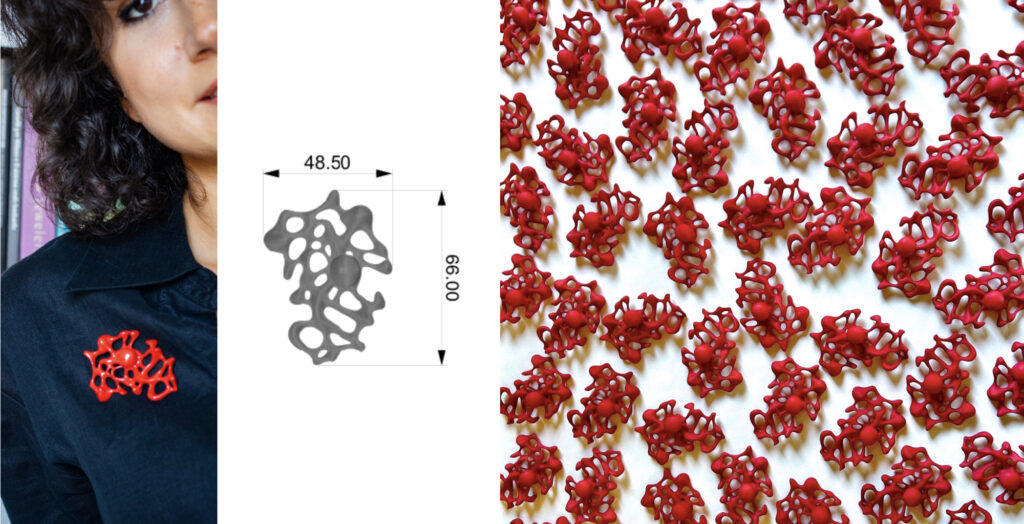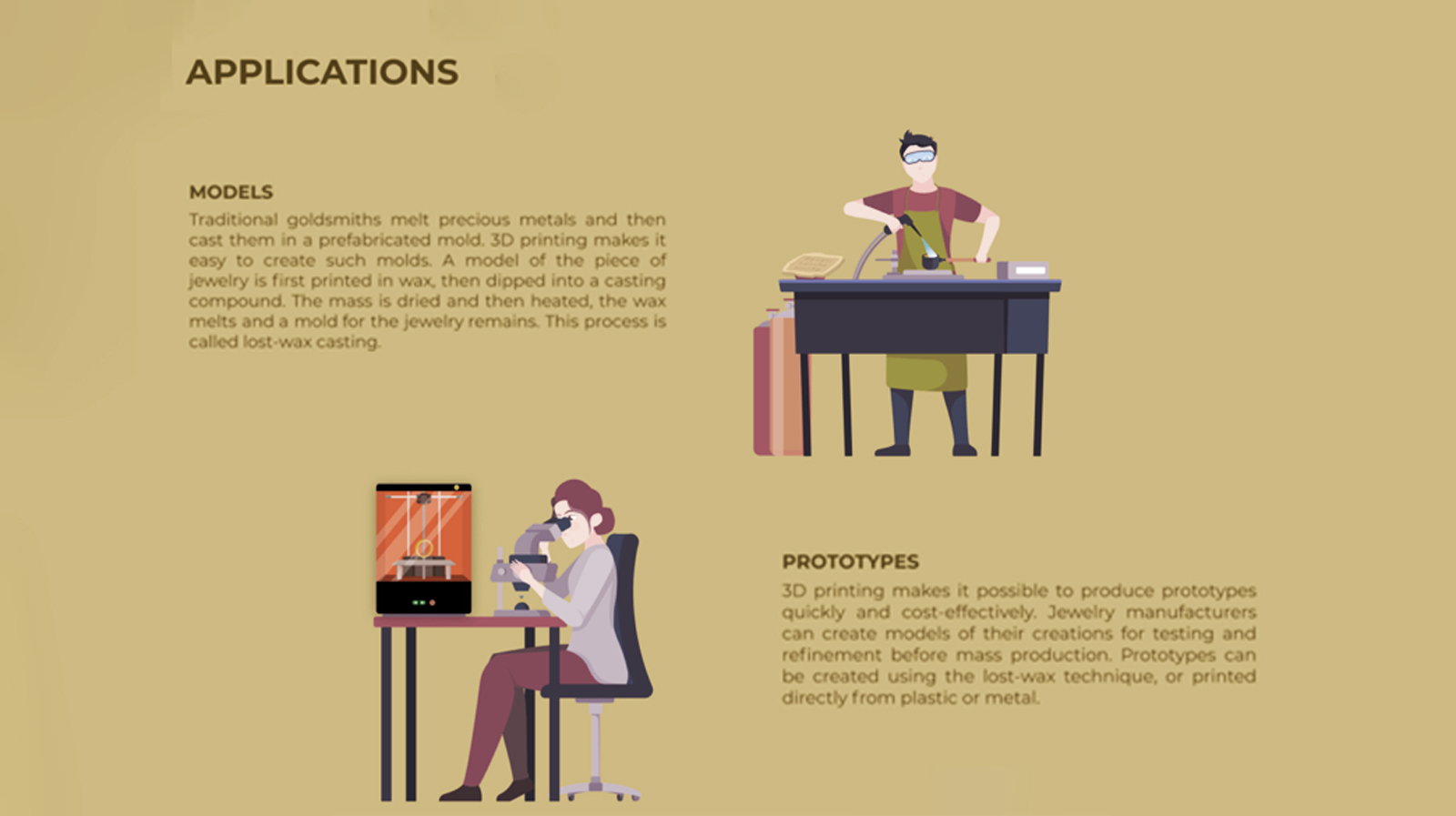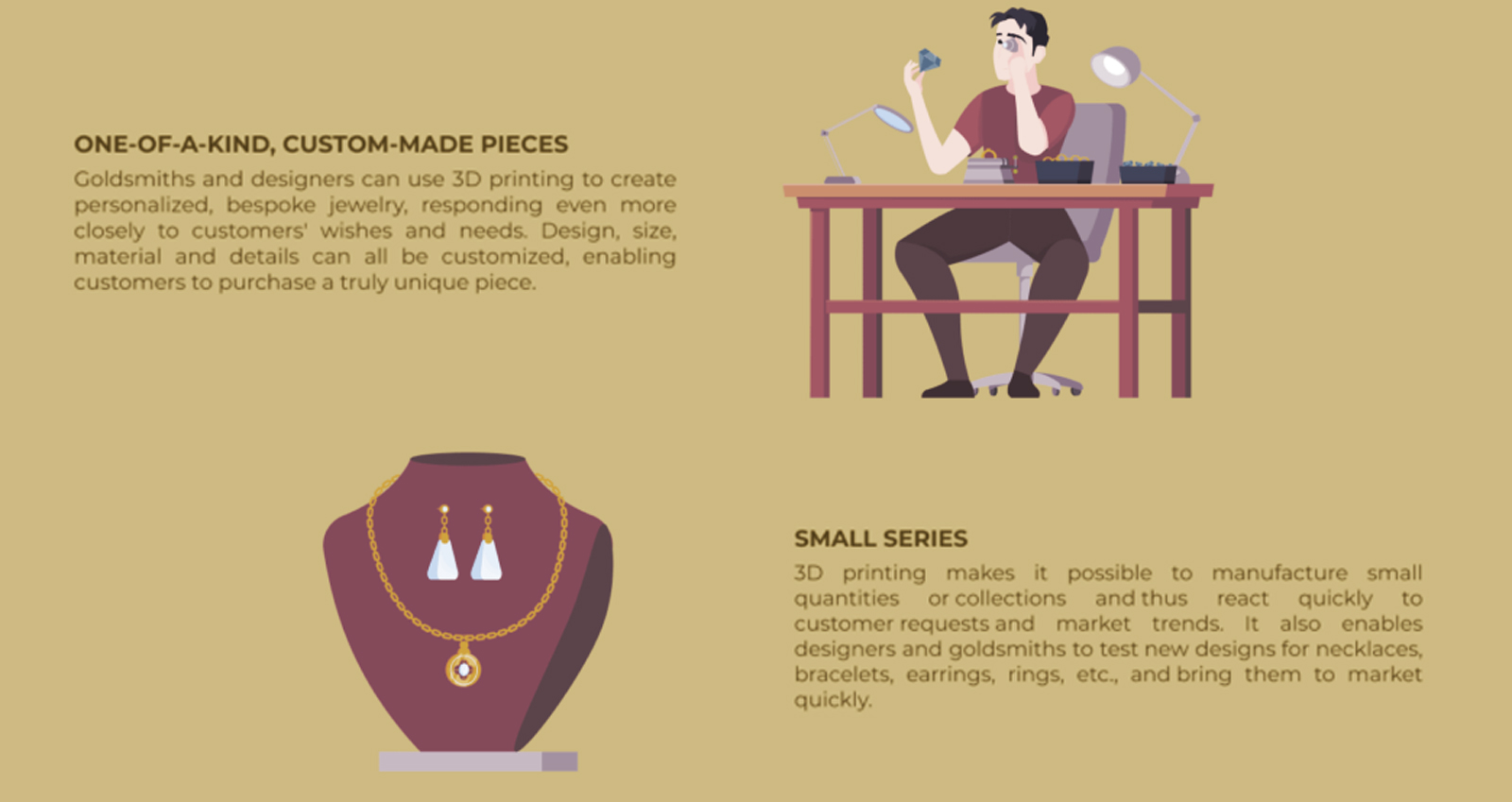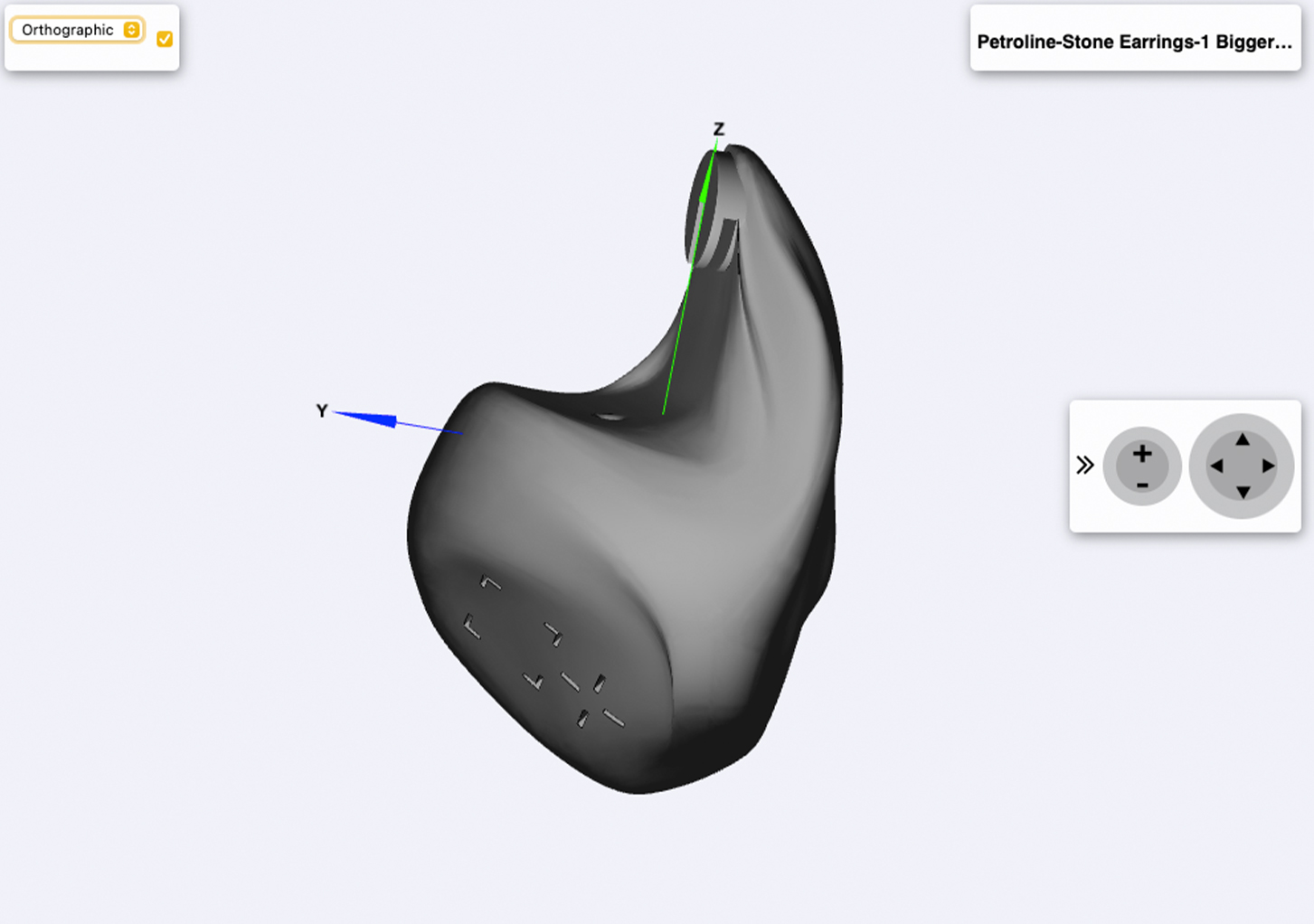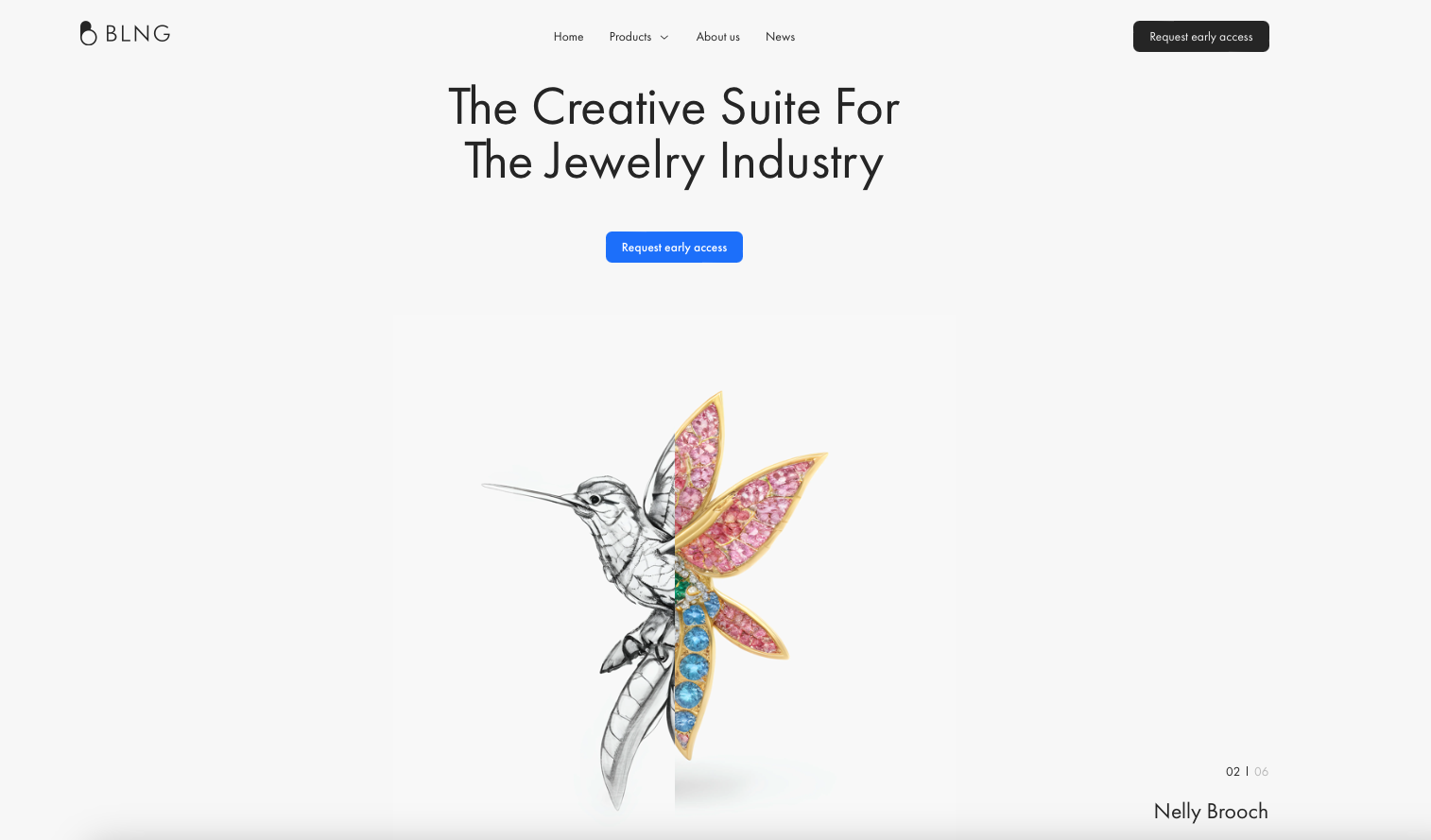3D Printing & AM in the Jewelry Industry
Advancements and Trends in the past year
The jewelry industry has undergone a transformative shift in 2024, with 3D printing playing a central role in reshaping design, production, and sustainability. This technology, once limited to prototyping, now enables jewelers to create intricate, personalized, and eco-friendly pieces that align with modern consumer demands.
Innovation and Adoption in Jewelry Manufacturing
3D printing offers unparalleled precision and creativity, allowing jewelers to craft complex designs previously unattainable through traditional methods. Techniques like Selective Laser Sintering (SLS) and Stereolithography (SLA) have become more widespread, enabling artisans to produce detailed and intricate jewelry. In particular, advancements in Electron Beam Melting (EBM) now make it possible to work with precious metals such as gold and silver, combining beauty and innovation.
The global market reflects this surge in adoption. Reports indicate that the 3D-printed jewelry market is set to grow at a compound annual growth rate (CAGR) of 19.9%, reaching $2.97 billion by 2030.
Sustainability and Customization: Leading Trends in 2024
Eco-friendly Practices:
3D printing significantly reduces material waste, making it an environmentally friendly alternative to traditional jewelry manufacturing. This approach not only minimizes excess but also appeals to an increasingly eco-conscious customer base.
Customization:
Personalization has become a cornerstone of consumer demand. Jewelers can now create bespoke pieces tailored to individual preferences, from custom engravings to entirely unique designs. Advanced software and generative AI tools allow jewelers to turn sketches or text descriptions into 3D renders, enhancing the customer experience.
Technological Advancements in 2024
Technological innovations have been crucial to the expanding role of 3D printing in the jewelry industry:
- Enhanced Software: Advanced design tools enable complex modeling with ease, giving artisans more creative freedom.
- High-Resolution Printing: Modern resin printers have achieved unprecedented detail, allowing for the production of delicate, miniature pieces.
- AI Integration: Artificial intelligence is enhancing design processes by improving material selection and optimizing production. For example, companies like Blng use AI to accelerate design timelines, combining creativity with efficiency.
Market Expansion and Consumer Accessibility
Luxury brands and independent artisans alike are adopting 3D printing, making unique jewelry more accessible. Social media and online platforms have also expanded the reach of 3D-printed jewelry, enabling global sales and supportingconsumer interest in innovative, personalized designs.
The market’s potential is immense. While it was valued at $5 billion in recent years, projections estimate it will reach $30.95 billion by 2033, driven by demand for unique and customizable jewelry.
Future Outlook
Looking ahead, the jewelry industry is ready for even greater integration of 3D printing. Potential developments include the use of smart materials, further reductions in environmental impact, and deeper collaborations between traditional artisans and technology experts.
In short, 2024 has marked a turning point in jewelry manufacturing. 3D printing is not just a tool for innovation; it is a transformative force shaping the future of the industry through precision, sustainability, and personalization
Sources
- https://www.3dnatives.com/en/infographic-3d-printing-in-the-jewelry-industry-230120254/#
- https://pru.in.ua/post/revolutionizing-jewelry-how-3-d-printing-is-shaping-the-future-of-adornments
- https://www.dms.com.ph/blog/how-is-3d-printing-transforming-the-jewelry-industry/
- https://michaelgabriels.com/blogs/michael-gabriels/how-3d-printing-has-changed-the-jewelry-industry
- https://www.globenewswire.com/news-release/2024/08/02/2923342/0/en/3D-Printed-Jewelry-Market-to-Grow-at-CAGR-of-20-through-2033-Growing-Market-for-Personalized-Fashion-and-Style.html
- https://www.researchgate.net/publication/349386238_Analysis_on_the_Value_of_3D_Printing_in_Jewelry_Design_Based_on_Artificial_Intelligence
This article Originally was published on Klimt02.net
